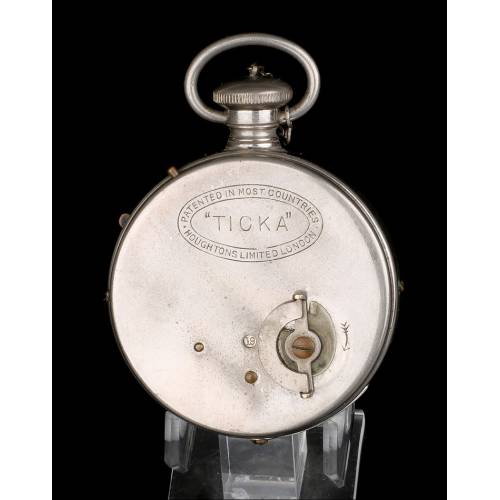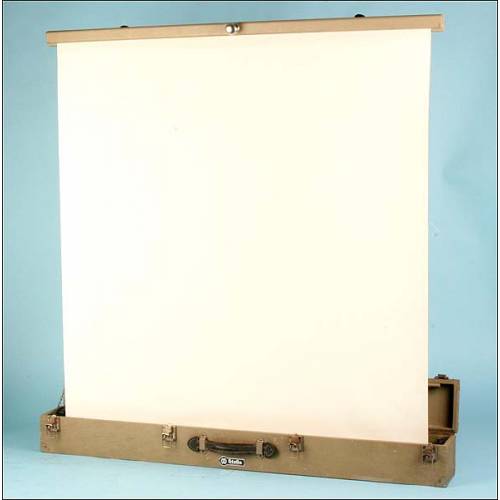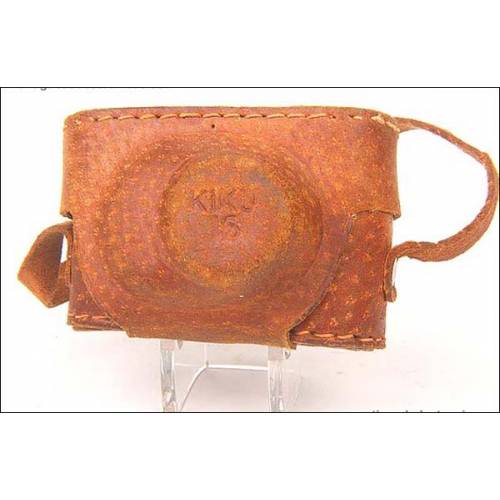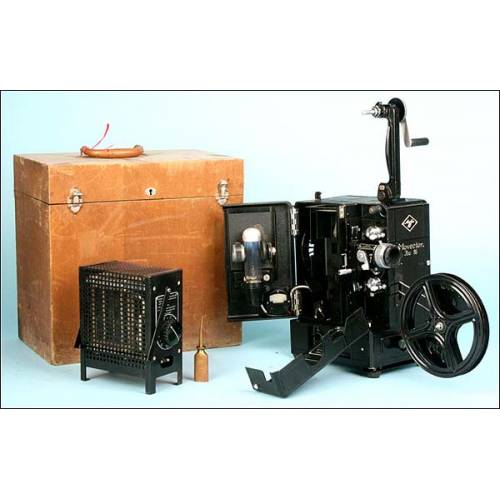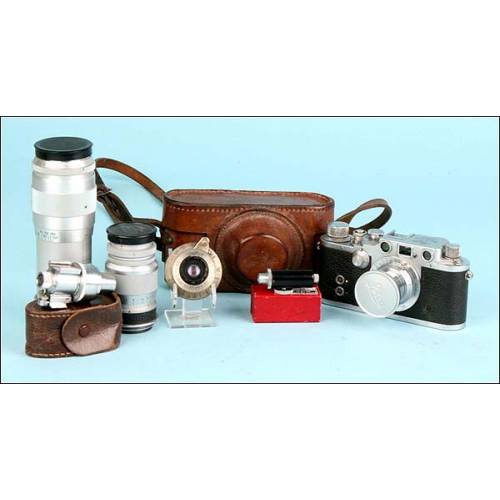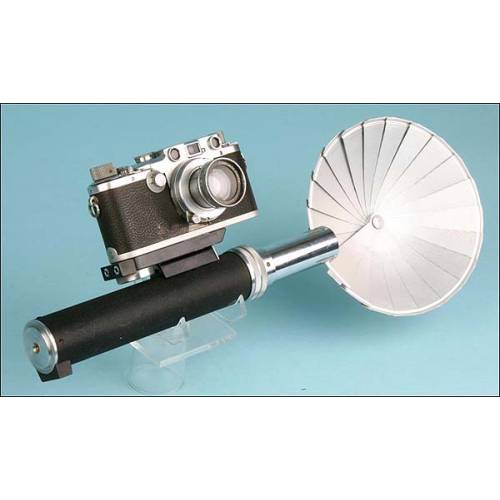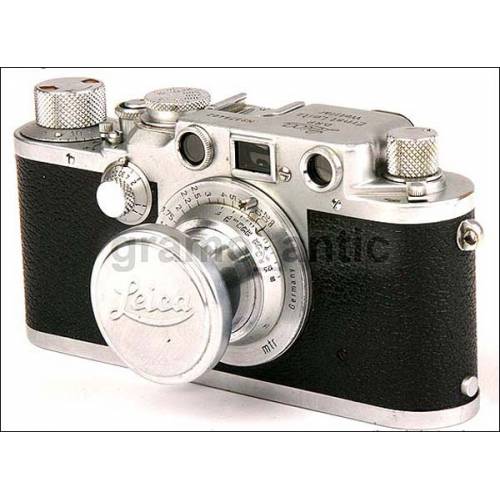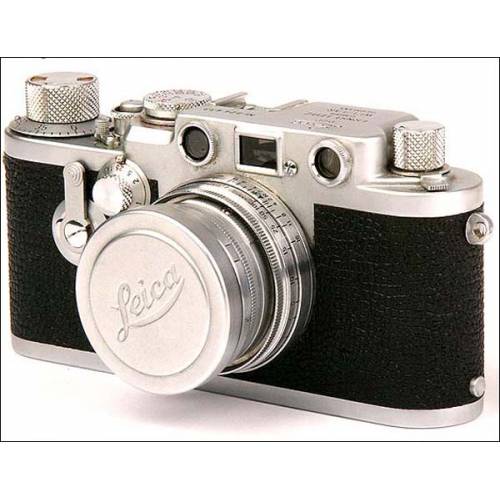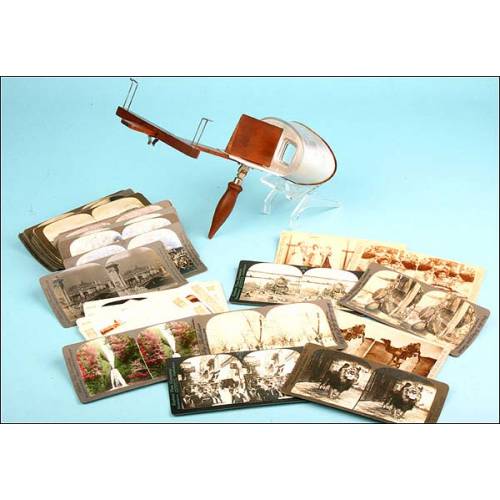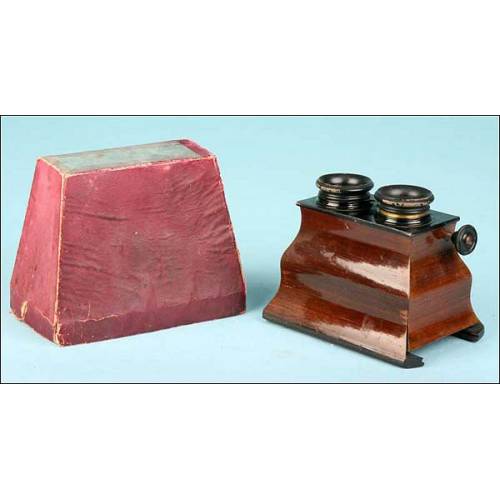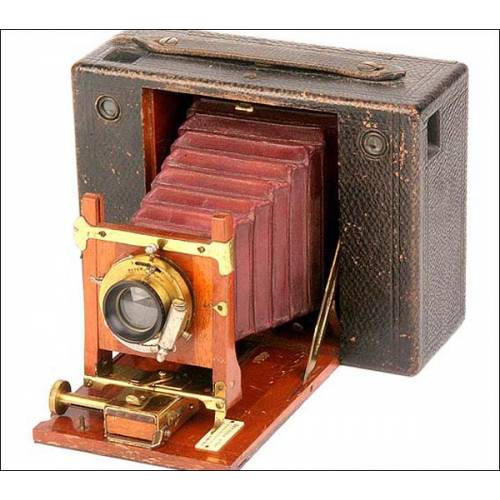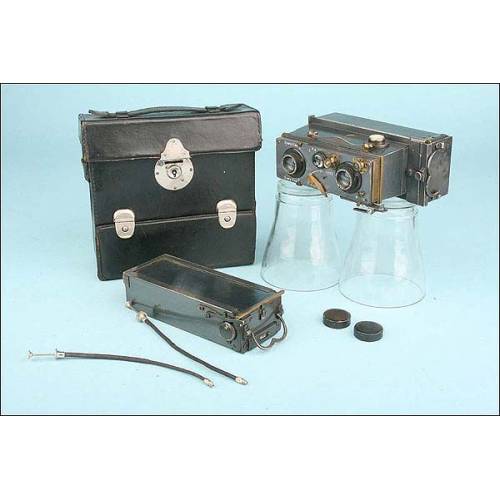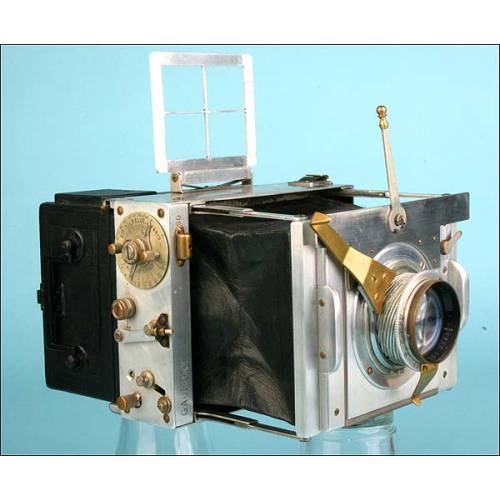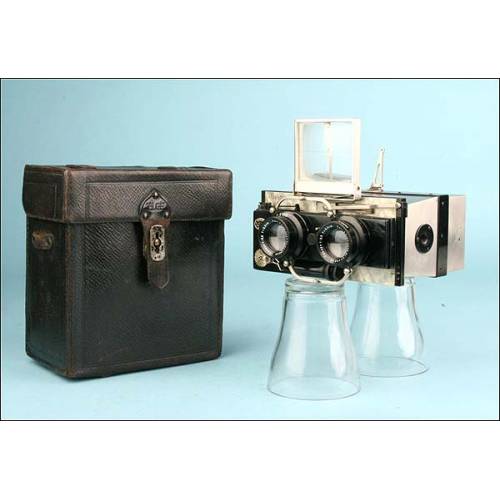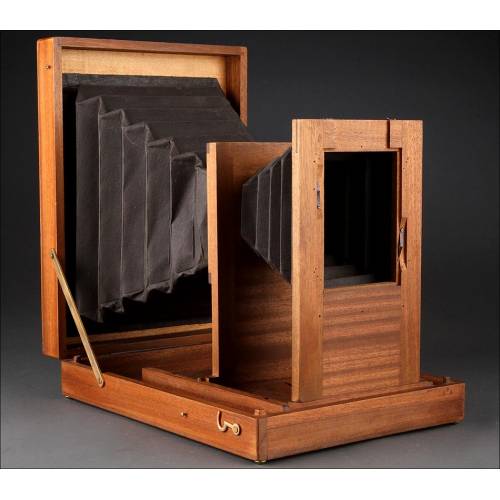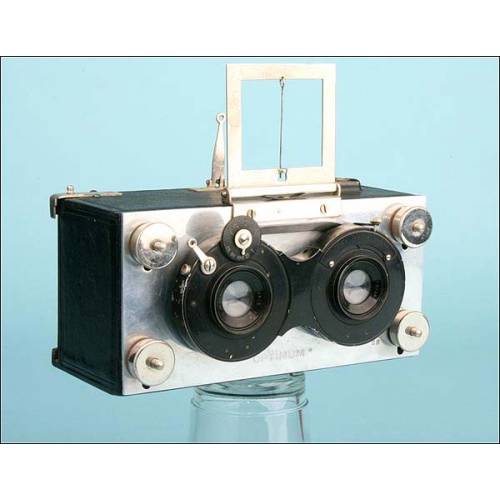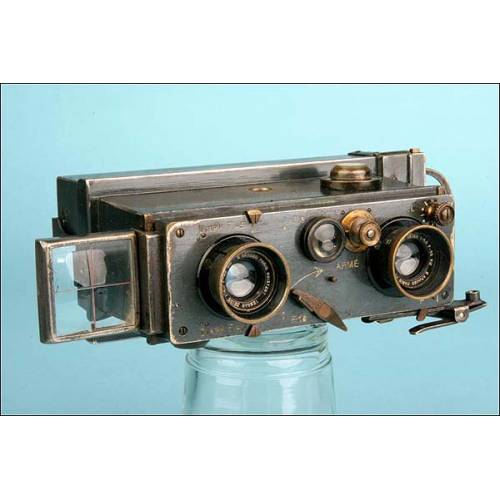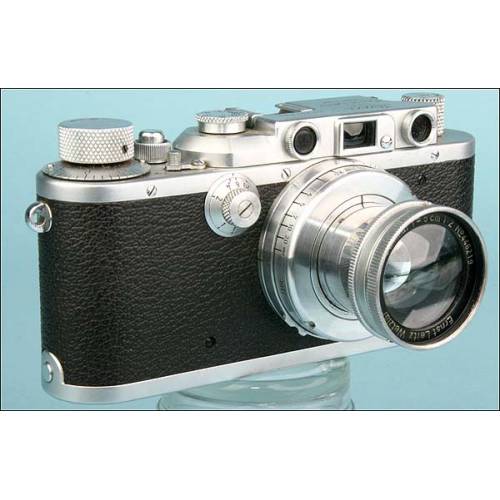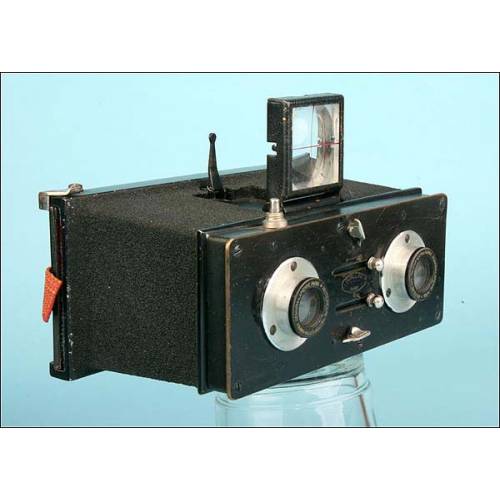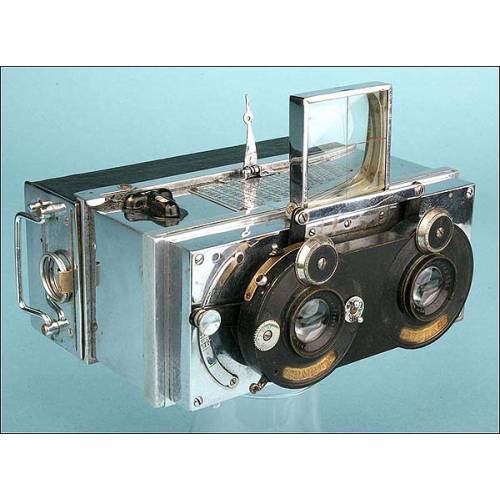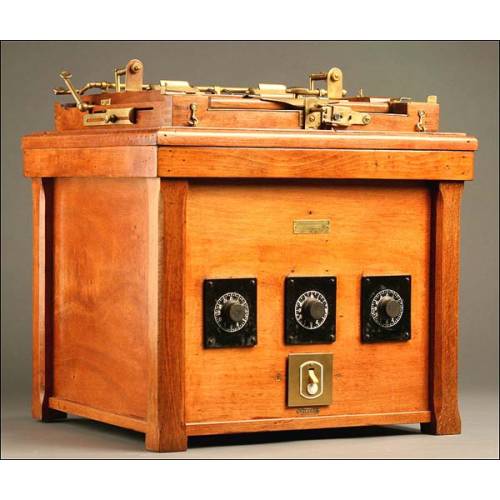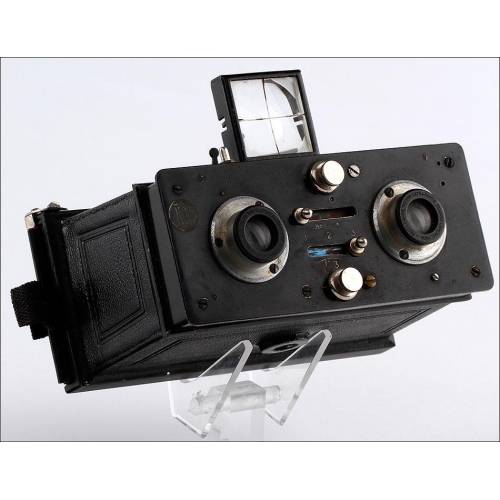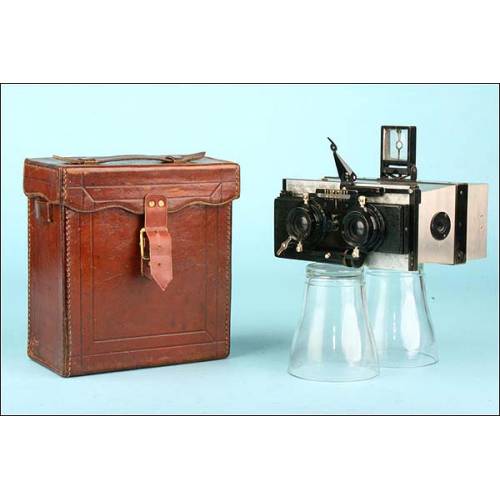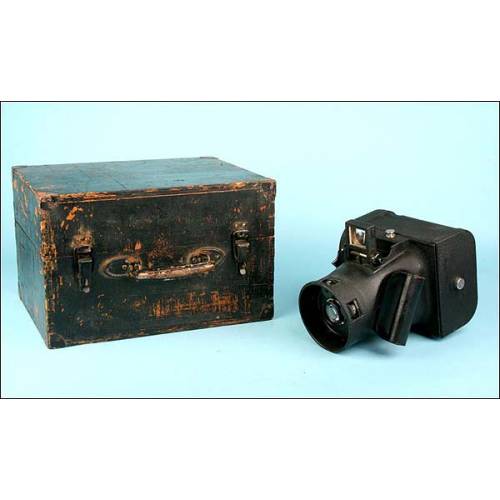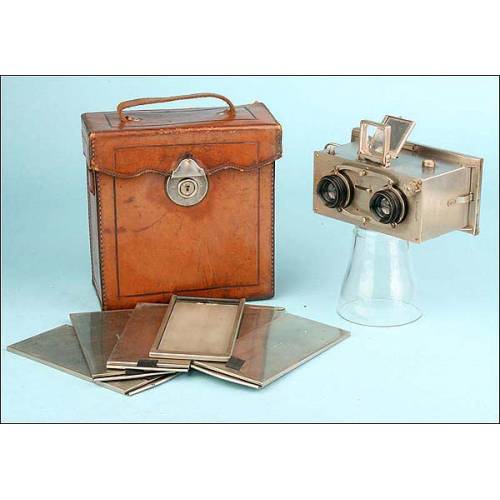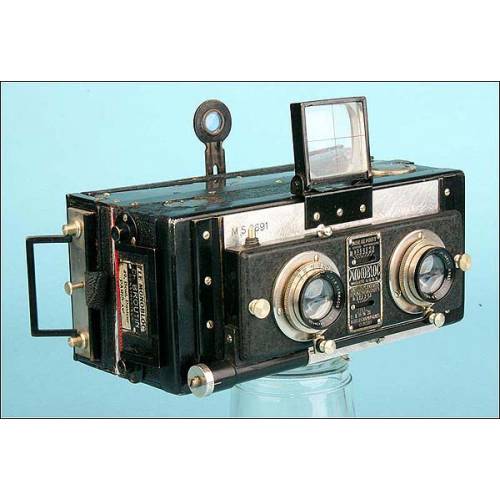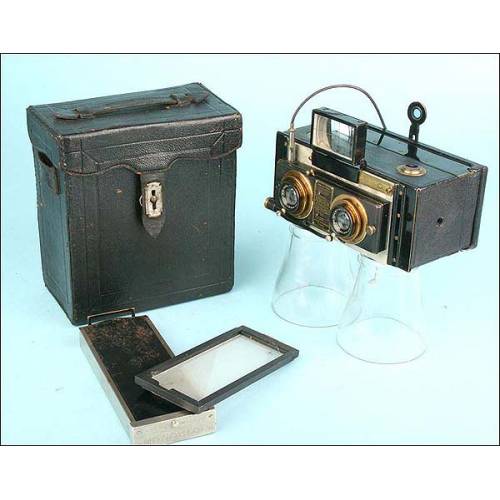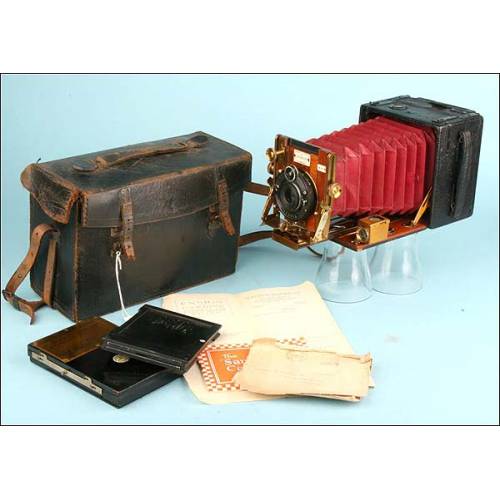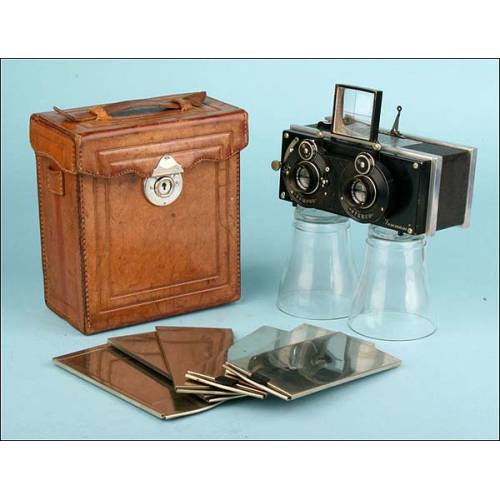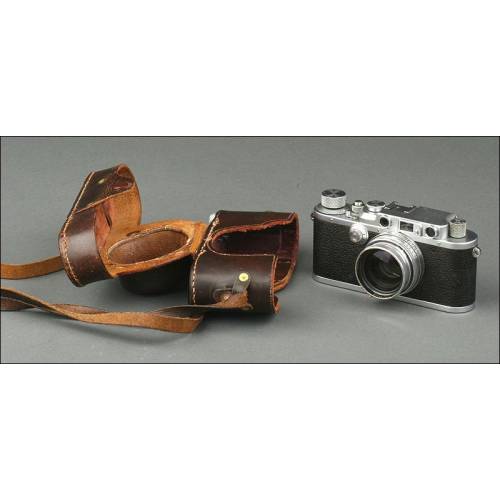C-805
Antique Ticka Spy Camera. England, Circa 1910.
Fascinating antique Ticka spy camera disguised as a pocket watch. In working condition. Collector's item.
Sold!
Antique Ticka spy camera hidden in a pocket watch, in good condition and fine working order. The camera comes from England; it was made in London circa 1910 by the renowned maker of cameras and photographic material Houghtons Ltd. The cameras casing is made of steel and shows a circular design, similar to that of a turn-of-the-century pocket watch. The fake crown hides the objective, which can be released by unscrewing a lid connected to the ring by a tiny chain. Inside the camera we find a wooden reel, an original piece with no film. The inner mechanism is in good condition and works fine. The steel front cap is decorated with a hand-engraved anagram that covers almost the whole surface. The anagram contains the interlaced letters of the TICKA brand name in different order, creating a very attractive motif. If we remove the lid, at the top of the casing we can see a metal plate with the following inscription in white lettering: TICKA AN EVER READY WAISTCOAT POCKET CAMERA. Under this plate there is a gap for the wooden reel. The cameras rear cap bears an engraved inscription which contains the manufacturing companys name, Houghtons Ltd. As rare as authentic, this Antique Ticka spy camera hidden in a pocket watch will arouse the fascination and the interest of every fan of curious antiques.Houghton Cameras History The history of the renowned Houghton cameras started in 1834, when George Houghton joined Antoine Claudet to manage a glass warehouse in London under the name Claudet & Houghton. After some previous changes, in 1903 the business became George Houghton & Sons Ltd; then it was already a camera and photographic material manufacturer. In 1904 the company absorbed the Holmes Bros., maker of the famous Sanderson cameras. Together with three more companies they created the Houghtons Ltd. The new company assumed the production of the smaller factories and kept on manufacturing Sanderson cameras until 1939. In 1908 it was the biggest British camera factory. In 1915 Houghtons Ltd. came into a partnership with W. Butchers & Sons to share their facilities. In 1926 the two companies merged; four years after they changed their name to Ensing Ltd. The firm merged with other companies and changed its name in different occasions till 1961, when production came to an end.










